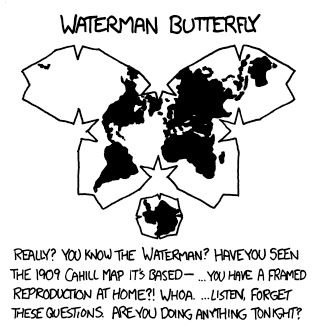

To which McGaugh et al. had this delicious reply:
One does not simply turn all the available baryons into stars.



To which McGaugh et al. had this delicious reply:
One does not simply turn all the available baryons into stars.



You might consider reading Accelerated Structure Formation: The Early Emergence of Massive Galaxies and Clusters of Galaxies. The paper is absolutely wonderful. The main thesis of the paper is, “Wow, the James Webb Telescope sure has been finding some remarkably mature galaxies for the early universe. Maybe we should consider the possibility that the models we use to predict galaxy formation, specifically lambda CDM, are incorrect and Non-Physical.”
The author states the difficulty in the conclusion:
Despite the predictive successes of MOND, we do not yet know how to construct a cosmology based on it. In contrast, ΛCDM provides a good fit to a wide range of cosmological observables but does not provide a satisfactory explanation of the many phenomena that were predicted by MOND, nor is it clear that it can do so. We find ourselves caught between two very different theories that seem irreconcilable despite applying to closely related yet incommensurate lines of evidence.
The complaints about the early maturation of galaxies seen by the JWST was widely reported. My favorite line from that article:
“Maybe in the early universe, galaxies were better at turning gas into stars,” Chworowsky said.
Sure, it’s not that our theories of cosmology are incorrect; things like star formation were just different back in the early universe. I guess you just had to be there.


The magnitude of the problem can be challenging to comprehend. There is about 1 Ttonne CO₂ to mitigate, which, at $100 per tonne, would cost $100 trillion USD to fully sequester. Throwing billions of dollars at it would not even start to make the smallest measurable dent in the problem at any scale whatsoever.
However, if the current rate of annual solar panel adoption continues at 26% for the next 18 years, then the global production of energy will be sufficient to pretty rapidly decarbonize the atmosphere at low cost, as the amount of solar energy will be triple that being produced globally from all sources at present.
Now, if that doesn’t happen, then another way to pay for decarbonizing is to bring about world peace and disarmament. The US annual defense budget is ~$800B. If the dividend from world peace was directed to climate mitigation, we could get rapid, dramatic reductions in CO₂ over the course of a century. And we would no longer have the threat of nuclear war looming over human civilization. I find that this idea is generally met with scepticism, but, unlike other government expenditures like healthcare and welfare, war is a highly discretionary expenditure that can be rendered unnecessary by some important people signing some papers.
This is a serious, expensive problem and the solutions, unfortunately, are going to need to be proportionally serious and expensive.


Tree planting is not a viable strategy for decarbonizing the atmosphere on human time scales.
“Planting a billion hectares of trees won’t be easy,” he said. “It would require a massive undertaking. If we follow the paper’s recommendations, reforesting an area the size of the United States and Canada combined (1 to 2 billion hectares) could take between one and two thousand years, assuming we plant a million hectares a year and that each hectare contains at least 50 to 100 trees to create an appropriate treetop canopy cover.” (NASA)
This is not to say that we shouldn’t plant trees. We should, but the idea that tree planting will result in reductions of greenhouse gases over the course of a single human life time on the order of the ~teratonnes of anthropogenic CO₂ is fantasy. If we want to re-establish a stable climate sooner than 1,000 years, we will have to pump the carbon back to the place where it came from: underground. Thus, CCS.


This piece is just propaganda. One wonders what would be expected:
To date, it has received $281 million in taxpayer dollars via Department of Energy grants. According to the Department of Energy, it has stored more than 2.8 million metric tons of carbon dioxide since 2011.
This would place the cost of sequestration at… $100 tonne, which is pretty much the price that everyone else has estimated for carbon capture and sequestration, as discussed in articles like this. How much was sequestration of 2.8 million tonnes of CO2 supposed to cost?
“Carbon capture project captures almost no carbon”. Really? Because 2.8 megatonnes doesn’t seem like “no carbon” to me. Was it that “it only caught 10% of the carbon produced on the site”? Well then, maybe it should have been $2.8B of taxpayer dollars to capture 28 MTCO₂. What would the headline have been then? “Carbon capture project costs taxpayer $2.8B for almost no carbon”?
I want the cost of sequestration to be lower just like anyone else, but doing nothing is a terrible strategy to learn how to reduce costs.
If you don’t want taxpayers to pay for it, change the laws and make the price of carbon emissions >$100 tonne. Then ADM will have to pay their own sequestration costs. If you don’t like sequestration because it’s expensive, then what’s the plan for decarbonizing the atmosphere and reducing global temperatures after emissions are zeroed out? If your plan for a carbon neutral world is “endure global warming for thousands of years until the carbon gets sequestered in soil”, that’s fine, but you can’t blame people for wanting to see things get cleared up on the order of decades.
This project was a success, insofar as it accomplished what it set out to accomplish as a publicly funded demonstration of the technology. The fact that the site emitted other carbon that wasn’t captured is irrelevant.

The fear of feedback loops is reasonable, but may not be inevitable. The reason complex life exists on this planet, in part, is that the biosphere evolved to prevent runaway climate change. As the life forms grew more varied and complex, the tools for maintaining a viable atmosphere also increased. So the Precambrian extinctions are attributed to changes that extremely primitive life forms couldn’t adapt to. Once life moved onto land, and trees, grasses, and flowers evolved, the number of ways for life to adapt went way up.
It should say something that the most recent mass extinction event (I mean, before the anthropocene), was caused by a giant asteroid and a decade(s?)-long winter, rather than a change in solar luminosity or runaway GHG shift.
With the advent of humans, this planet now has tools available for GHG and solar radiation management (SRM) that were unthinkable by nature. SRM with sulfur dioxide and air capture of CO₂ allow for the rapid reshaping of the climate almost as fast as fossil fuel combustion. As a result, the tools to stabilize the climate are available and their use is inevitable. The longer we wait to use them, the worse the problem gets and the more people are harmed, but given the unheard-of capacities that we’ve developed to stave off runaway global warming, I do not believe that humanity will choose extinction over GHG management and SRM.
Most of these thoughts come from Gaian Bottleneck Theory, which you can read more about here. You may be right, but I’m hoping you are wrong (no offense).


Area of sky obscured by the milky way.


Yeah, FreeCAD is great, but I can only think of one project that I’ve done where SolveSpace absolutely could not work for the geometry I needed and I had to rebuild it in FreeCAD. But that’s just a product of what I am building: simple things like brackets, knobs, and replacement lids mostly. I don’t need chamfers, drafts, lofts, etc. and I get what I need with minimum of time and effort using SolveSpace.
When I do need those features, complex geometries, or modification of pre-built step files, FreeCAD has never failed me.


No one mentioned SolveSpace, so… SolveSpace. Solvespace is a fully functional 3D parametric CAD solver in a free, cross-platform, open-source, portable, single self-contained executable 10 MB file.
I do a fair amount of hobby 3d printing and SolveSpace makes design and CAD stupid easy. The interface is perfectly laid out, the hotkeys are intuitive, and the capabilities make small-scale projects a breeze.
Now, the program has its limitations, but if I just want something quick and simple, there is nothing better.
Did the SA article come out before or after the article above? Because the JWST has been creating problems for lambda CDM. Take, for example, this Quanta Magazine article. The purport of the article is that, even though the data from the JWST seems to contradict ΛCDM, it really doesn’t, if we just apply post-hoc modifications.
Why are the galaxies so bright at very high red shifts? Oh, the initial mass function was higher. Or it was super efficient star formation. Or the density of dark matter was higher in the early universe. Or the density of dark energy was higher, so the universe actually wasn’t that young after all. Or a linear combination of these things, and maybe a few others, that we can fit to the data. You don’t reconsider old theories in the light of new data, just apply more terms so that the old theory matches the new data.
For me, if the data starts to deviate from my model, it probably means that I need a different model